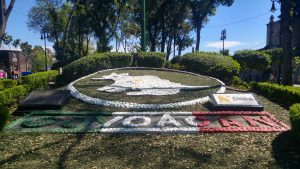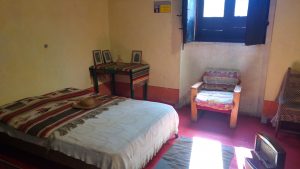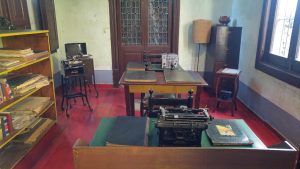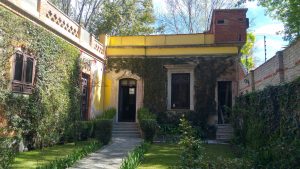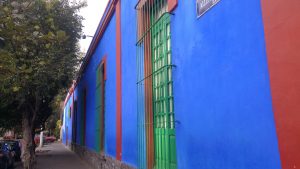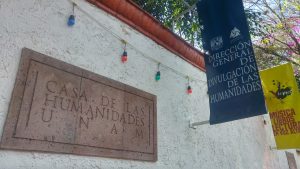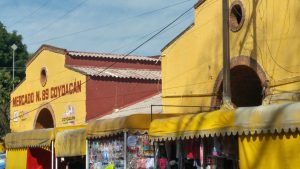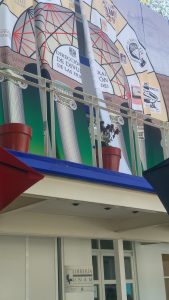Coyoacán. Strolling along Kahlo's and Trotsky's streets.
The traditional and picturesque neighborhood of Coyoacán hosts Frida Kahlo’s Casa Azul (Blue House) and Leon Trotsky’s House Museum.

Five hundred meters separate Leon Trotsky’s house from that of the Kahlo-Rivera artist couple. The Russian political and intellectual writer, who integrates the METROMOD project because of his exile in London and Istanbul, arrived in Mexico in 1937. After spending about two years in the Blue House of Frida Kahlo and Diego Rivera, he moved into a small house a few streets away. After spending some time in the Blue House of Frida Kahlo and Diego Rivera, he moved into a small house a few streets away from there.
The picturesque garden and the house seems to have remained intact. The place is peaceful but somewhat oppressive and thrilling because of the watchtowers that were built after the first attempt on Trotsky’s life in May 1940. The spaces are preserved with the original furniture and objects: the kitchen with the utensils, the dining room, Trotsky’s office with his desk, his library and a bed to rest during the day, Trotsky’s room for the night, that of his grandson, and the bathroom, which has preserved the elements that were used in Mexico in the first half of the 20th century.
The original house of the Kahlo family is the part that is still painted in blue. The artist lived in the Casa Azul (Blue House) with her parents before she met Diego Rivera, the famous Mexican muralist. When the couple inherited the place, Rivera bought the adjacent land. There, Kahlo’s apartments were built: a bright workshop, a room for her to rest, and another room to sleep at night. Kahlo, whose mother was from Oaxaca and whose father was from Germany (the photographer Guillermo Kahlo), grew up in an intellectual environment. This bicultural background is perceived in Frida Kahlo’s personality and trajectory. With Ribera, they evolved in an international intellectual environment that led them to host Leon Trotsky upon his arrival in Mexico. When the houses were finally allowed to be opened to the public in 2006, letters, posters, photographs, that until now had been confined first by Rivera’s will, and later by Dolores Olmedo’s decision, came to light.
Coyoacán is a historic neighborhood formerly located on the outskirts of Mexico City. After having been integrated into the metropolis, it still conserves its character of a town. The main square, the historical market, the narrow streets, and the low, colorful houses give Coyoacán its personality. It now hosts several museums among which the Museo Nacional de Culturas Populares and of course Trotsky’s and Kahlo’s houses. There are also incredible libraries such as El Sótano, or the bookstore at the Centro Cultural Elena Carro, and the small one at the Casa de las Humanidades de la Universidad Nacional Autónoma de México with a unique collection and very attentive booksellers.



